Showing 1 to 10 of 259 results
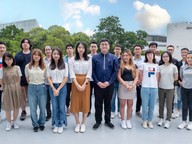
Thermochromic perovskite is a new color switch material used in energy-saving smart windows. Despite its potential for energy savings, thermochromic perovskite suffers from poor weather resistance, susceptibility to water damage, and high optical haze, limiting its practical application. To overcome these challenges, researchers from City University of Hong Kong (CityUHK) developed a breathable, weather-resistant, low-haze perovskite smart window inspired by medical masks, pushing forward the wide applications of smart windows in green buildings.
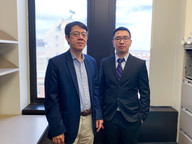
Understanding water behavior in nanopores is crucial for both science and practical applications. Scientists from City University of Hong Kong (CityU) have revealed the remarkable behavior of water and ice under high pressure and temperature , and strong confinement. These findings, which defy the normal behavior observed in daily life, hold immense potential for advancing our understanding of water's unusual properties in extreme environments, such as in the core of distant ice planets. The implications of this major scientific advancement span various fields, including planetary science, energy science, and nanofluidic engineering.
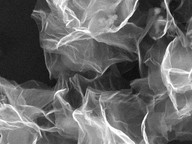
Zinc-nitrate batteries are a primary non-rechargeable energy storage system that utilizes the redox potential difference between zinc and nitrate ions to store and release electrical energy. A research team co-led by chemists from City University of Hong Kong (CityU) have developed a high-performance rechargeable zinc-nitrate/ethanol battery by introducing an innovative catalyst. They successfully designed and synthesized an efficient tetraphenylporphyrin (tpp) modified heterophase rhodium-copper alloy metallene (RhCu M-tpp). This bifunctional catalyst exhibits remarkable capabilities in both the electrocatalytic nitrate reduction reaction (NO3RR) and ethanol oxidation reaction (EOR) in a neutral medium, overcoming the monofunctional limitations of traditional metal-based solid catalysts and providing a valuable reference for the design of sustainable energy storage in the future.
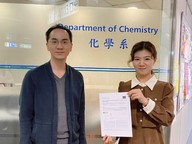
G-quadruplexes (G4), which are special structures in DNA and RNA that play a crucial role in cells, have been associated with cancers and neurological diseases. A research team from City University of Hong Kong (CityU) recently built a new platform to select L-RNA aptamers that can target functional G4 structures. They found an L-RNA aptamer called L-Apt12-6 that binds specifically to a specific topology of G4 structure: parallel G4. The findings may be beneficial for developing new drugs and treatments for G4-related diseases, like cancers.
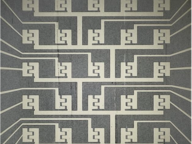
A research team from City University of Hong Kong (CityU) recently successfully achieved lattice-mismatch-free construction of III-V/chalcogenide core-shell heterostructure nanowires for electronic and optoelectronic applications. This breakthrough addresses crucial technological challenges related to the lattice mismatch problem in the growth of high-quality heterostructure semiconductors, leading to enhanced carrier transport and photoelectric properties.

Traumatic injuries to the peripheral nervous system are a leading cause of disability, especially patients with proximal peripheral nerve injury. It’s hard to regenerate and regain normal function in a short period, and it often leads to sensory and motor dysfunction, which greatly affects the patient’s quality of life. Recently, a research team led by City University of Hong Kong (CityU) neuroscientists found that metaxalone treatment accelerates nerve repair and function recovery comparable to immediate treatment, offering a highly relevant clinical strategy.
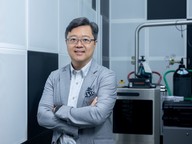
Downscaling of electronic devices, such as transistors, has reached a plateau, posing challenges for semiconductor fabrication. However, a research team led by materials scientists from City University of Hong Kong (CityU) recently discovered a new strategy for developing highly versatile electronics with outstanding performance, using transistors made of mixed-dimensional nanowires and nanoflakes. This innovation paves the way for simplified chip circuit design, offering versatility and low power dissipation in future electronics.
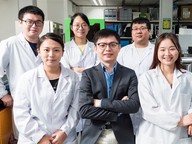
Electrocatalysis plays a vital role in developing clean energy, greenhouse gas removal and energy storage technologies. A study co-led by City University of Hong Kong (CityU) researchers found that single-walled carbon nanotubes are excellent substrates for enhancing greenhouse gas conversion through molecular curvature. By using these nanotubes as support to induce strain on an electrocatalyst, the efficiency of carbon dioxide reduction to methanol can be significantly improved. This breakthrough opens avenues for developing curved molecular electrocatalysts to efficiently convert carbon dioxide (CO2), one of the key greenhouse gases, into useful chemicals and fuels, thus reducing carbon emission .

Oxidation can degrade the properties and functionality of metals. However, a research team co-led by scientists from City University of Hong Kong (CityU) recently discovered that severely oxidized metallic glass nanotubes can attain an ultrahigh recoverable elastic strain, outperforming most conventional super-elastic metals. They also discovered the physical mechanisms underpinning this super-elasticity. Their discovery implies that oxidation in low-dimension metallic glass can result in unique properties for applications in sensors, medical devices and other nanodevices.
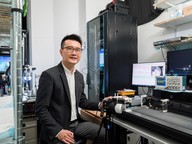
Traumatic brain injury (TBI) and ischemic stroke are major public health concerns and leading causes of death and disability worldwide. A research team led by CityU neuroscientists recently discovered that low-dose ionizing radiation (LDIR), such as X-ray irradiation, can reduce lesion size and reverse motor deficits in TBI and ischemic stroke mice, demonstrating that LDIR may be a promising therapeutic strategy for TBI and stroke patients.